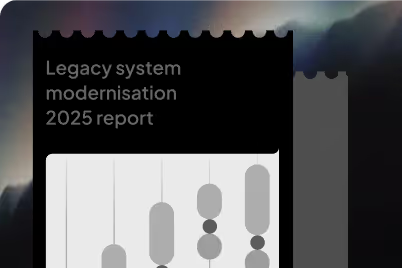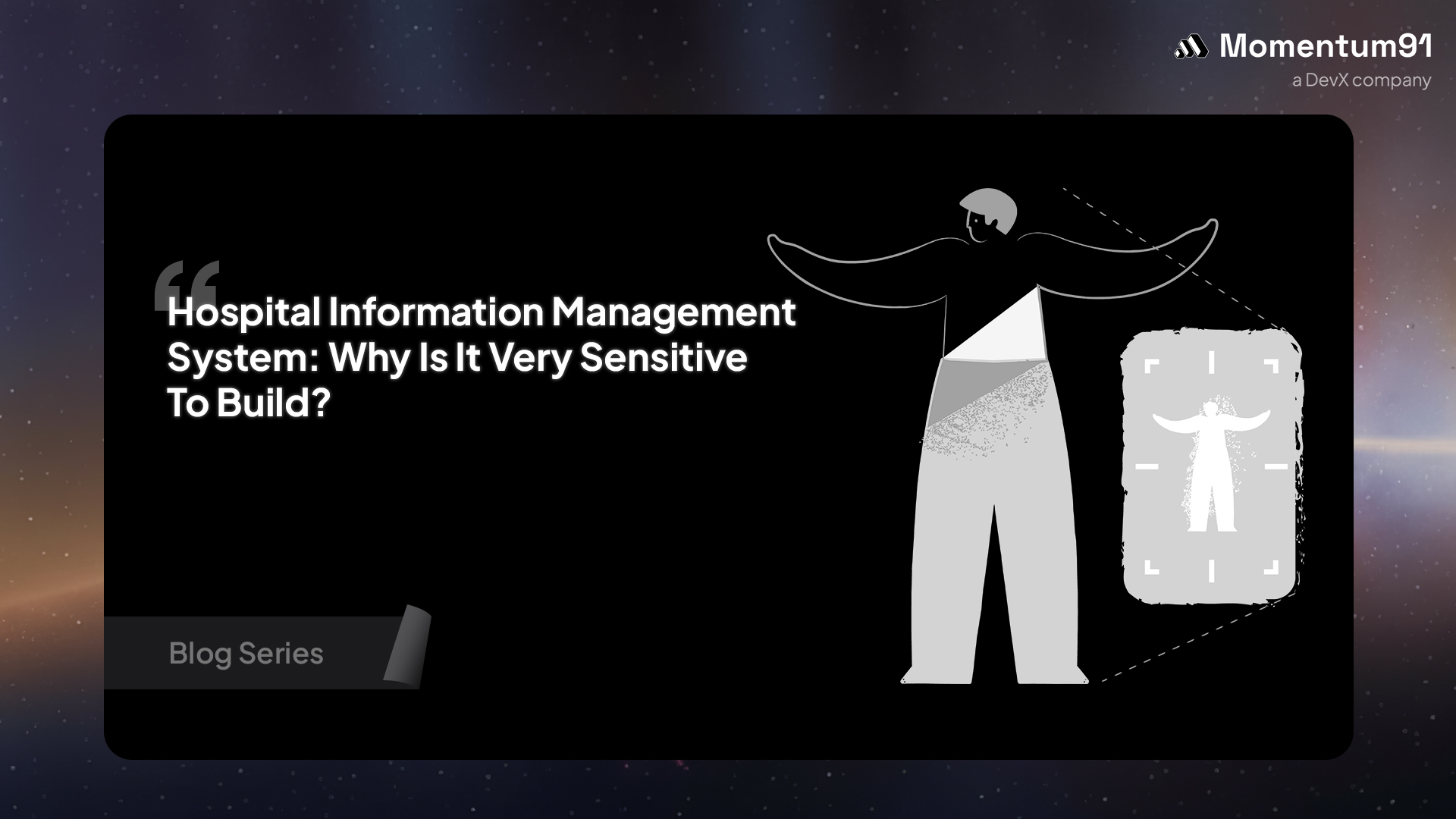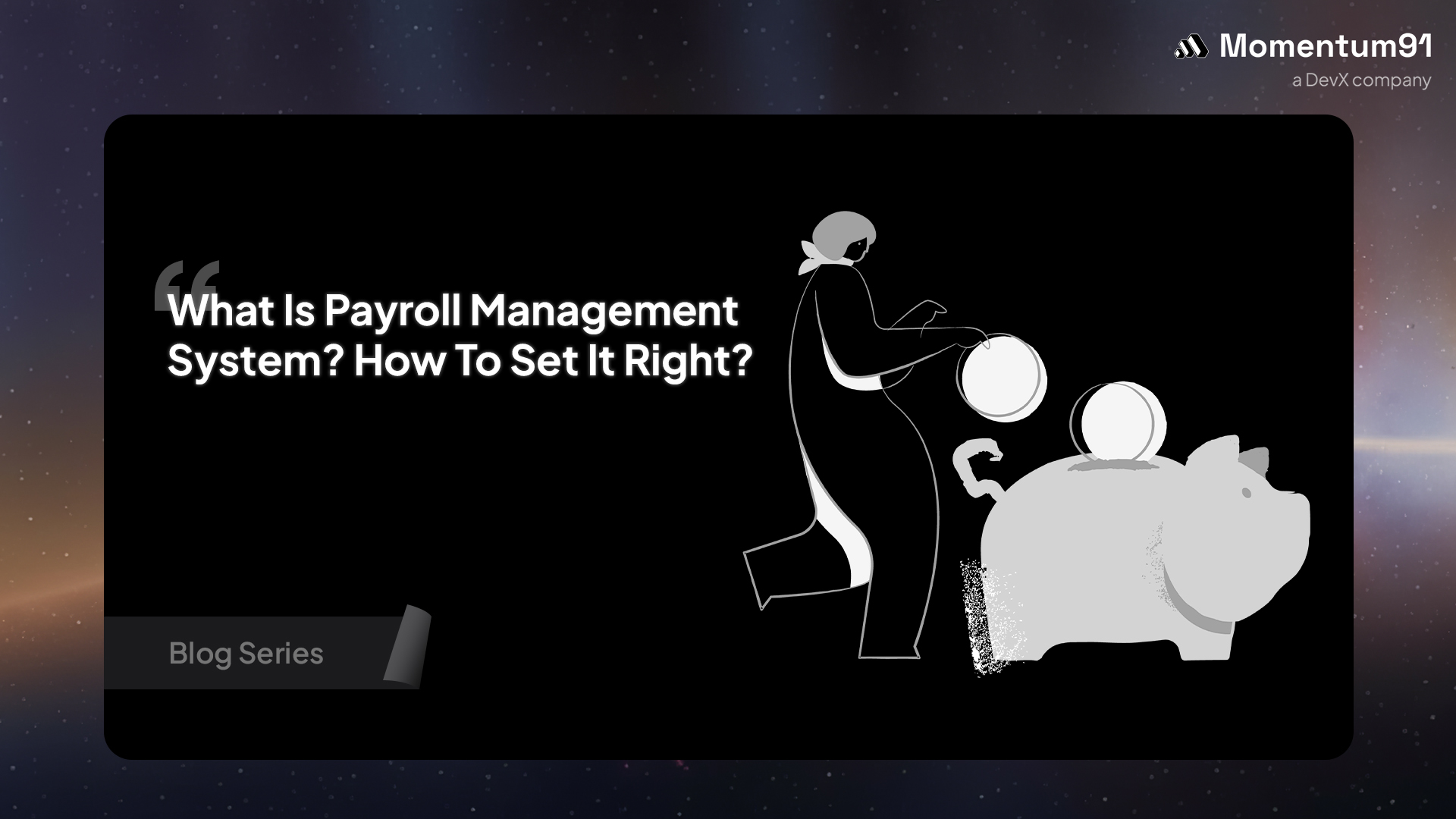Logistics Management System: 10 Complexities Explained in Simple Terms

A customer clicks "Buy." Simple, right? But between that click and their package arriving is a complex journey. Today, customers expect lightning-fast, perfectly accurate order fulfillment for free. Behind the scenes, you're battling data chaos and rising costs.
This entire, complex web is what a Logistics Management System (LMS) is built to manage. It's the central brain for your entire operation. We'll show you the 10 real-world complexities this logistics management system is designed to fix.
We at Momentum91 solve these problems daily, and we'll group them into three major challenges.
Challenge Cluster 1: The Data Black Hole (When Your Systems Don't Talk)
The biggest problem in your supply chain management isn't physical. It's informational. Before you can optimize a single truck, you have to optimize your data flow. For most businesses, this is the single biggest point of failure and where a logistics management system first shows its value.
Complexity 1: Data Silos
Your systems are a confusing mix. Think about all the separate software you use:
- Your Warehousing Management System (WMS) knows your inventory.
- Your Transportation Management System (TMS) knows the shipping status.
- Your ERP has the financial data.
- Your e-commerce platform has the order.
The problem? None of them talk to each other. Data silos are the result. To answer one simple customer question, your team logs into three different systems and copy-pastes tracking numbers. This manual process is slow, expensive, and full of human error.
A good logistics management system is designed to tear down these data silos. This is a core function of a modern logistics management system. The whole point of a logistics management system is to connect things and provide a single view.
Complexity 2: The "Where Is It?" Nightmare (No Real-Time Tracking)
This is the "WISMO" (Where Is My Order?) call that floods your customer service team. It's the number one customer question, and you can't answer it. Because your data is fragmented, you're always one step behind.
Here’s what this looks like in practice:
- Your real-time tracking data is 24 hours old.
- It's based on a manual spreadsheet upload from your 3PL management partner.
- You can't be proactive about a weather delay or a customs hold.
- You find out about the problem at the same time as your angry customer.
This lack of real-time tracking frustrates everyone. A logistics management system provides this real-time tracking. A strong logistics management system makes this a top priority. Without a logistics management system, you're flying blind.
Complexity 3: Blind Demand Forecasting
Effective demand forecasting isn't guesswork. It requires blending many data points:
- Historical sales data
- Current inventory control levels
- Seasonal trends
- Upcoming marketing promotions
When your sales data is in one silo and your inventory data is in another, this is impossible. You are forced to make six-figure purchasing decisions using an out-of-date spreadsheet. This leads to bad outcomes, like a warehouse full of last season's product while you have zero stock of your new bestseller.
This guesswork is a common problem a logistics management system fixes. A unified logistics management system gives you the data you need for smart demand forecasting. Your supply chain management depends on a good logistics management system.
How an LMS solves the Data Black Hole
A Logistics Management System acts as the "single source of truth." It doesn't necessarily replace your Warehousing Management System or Transportation Management System. It unites them.
Through modern API integration, it pulls all data from all systems into one central dashboard. Here is a simple example of how this logistics management system works:
- It "listens" to your sales channel for new orders.
- It "checks" the WMS for inventory.
- It "tells" the TMS which carrier to use.
The result is a "control tower" view of your entire operation. You finally get genuine real-time tracking and the clean, unified data needed for accurate demand forecasting. This control is the main benefit of a logistics management system. This complete view covers everything from inventory control to last-mile delivery.
A good logistics management system makes data your strength, not your weakness. Your supply chain management becomes proactive.
Challenge Cluster 2: The Physical Puzzle (Moving "Stuff" Is Hard)
Data is half the battle. The other half is the physics: the tangible, real-world movement of goods. This is a huge part of your supply chain management. Moving physical objects from shelf A to customer B, thousands of times a day, without going bankrupt is the core physical challenge. A logistics management system helps control these physical movements.
Complexity 4: The Inventory Control Balancing Act
This is the core tension of inventory control. It's a tough balancing act for your supply chain management.
- Overstocking: This ties up your cash in products that collect dust. It wastes capital and precious warehouse space, driving up carrying costs.
- Understocking: This is even worse. It leads to stockouts, lost sales, and sends your hard-won customers straight to your competitors. This directly hurts your order fulfillment capabilities.
Without a unified logistics management system, you might have the right amount of product, but it's in the wrong warehouse. This leads to costly, slow transfers. Managing inventory control well is a key part of any logistics management system. This is a primary job for a logistics management system.
Complexity 5: Warehouse Automation & Inefficiency
In a non-optimized warehouse, your pick-and-pack team is running marathons. Your warehousing management system might be to blame. A pick list is just a list, sending a worker from Aisle 1 to Aisle 20, then back to Aisle 2. This is the number one bottleneck in order fulfillment.
Studies show pickers can spend over 70% of their day just walking. This manual chaos is slow, expensive, and error-prone. Think of all the wrong items or wrong quantities shipped. As order volume grows, you can't just "hire more people." Your fulfillment process will collapse.
Warehouse automation isn't just about robots; it's about automating the path with a good logistics management system. This is a major failure point a logistics management system addresses. A smart logistics management system will optimize these paths.
Complexity 6: The Freight Management Cost Spiral
Freight management is a game of optimization. Are you using the right carrier for the right package? Are you consolidating shipments to turn cheap LTL (Less-Than-Truckload) shipments into an FTL (Full Truckload)? Without a system, you're just picking the "default" carrier.
This means you're paying spot rates and sending trucks out half-empty. You have no negotiating power. You have no way to audit freight bills for "accidental" surcharges. Your transportation management system might be just a phone and a prayer.
A logistics management system integrates freight management features. This is a core part of a logistics management system. The logistics management system should save you money on freight.
Complexity 7: The "Final Boss" of Last-Mile Delivery
The final leg of the journey is the most complex and the most expensive. Reports show last-mile delivery can account for up to 53% of the total shipping cost. This is also the only part of your complex supply chain the customer actually sees.
A delay here, a damaged box, or a failed delivery attempt can erase all the goodwill you've built. This is a failure of order fulfillment. You are judged 100% on this final 1% of the journey. Poor last-mile delivery means you lack true real-time tracking. A logistics management system must help you manage last-mile delivery.
This is a weak point for many companies, but a good logistics management system can make it a strength. A logistics management system connects this final step to the entire process.
How an LMS Solves the Physical Puzzle
A Logistics Management System is the "orchestra conductor" for your physical goods. It connects your WMS (warehousing management system) to your TMS (transportation management system) to the driver's handheld device.
Here's how this logistics management system solves the puzzle:
- It receives an order and instantly optimizes it.
- Inside the warehouse, it instructs the WMS to generate a "smart" pick path (like "batch picking" or "zone picking") to minimize walking.
- Once packed, it queries the TMS, which compares rates from all your carriers in real-time. It finds the cheapest, fastest option for fleet management.
- It then automatically prints the label and updates the real-time tracking for the customer.
This ensures a seamless, cost-effective physical flow. A good logistics management system makes this entire process smooth. This is the real power of a unified logistics management system.
Challenge Cluster 3: The Hidden Threats (What You Don't See Will Hurt You)
This section covers the high-stakes complexities that many businesses forget about until it's too late. Your data is flowing and your boxes are moving. You're safe, right? Not yet. The most modern complexities are the ones that blindside you. A good logistics management system is built to handle these, too.
Complexity 8: The Billion-Dollar U-Turn (Reverse Logistics)
Returns are a massive, hidden cost. With e-commerce return rates hitting as high as 30% for some categories, handling them is like running your supply chain in reverse.
Reverse logistics isn't just shipping it back. It's a costly, multi-step process:
- Step 1. Authorizing the RMA (Return Merchandise Authorization).
- Step 2. Providing a return shipping label.
- Step 3. Receiving the package at the warehouse.
- Step 4. Inspecting the item (Is it damaged? Can it be resold?).
- Step 5. Deciding to restock, refurbish, or liquidate it.
- Step 6. Finally, processing the customer's refund.
Without a dedicated logistics management system module for reverse logistics, returns pile up in a graveyard corner of your warehouse. This delays customer refunds and destroys your profits. A strong logistics management system manages this entire flow.
Complexity 9: The Omnichannel Logistics Maze
You sell on Amazon, your website, and in-store. This omnichannel logistics model is great for sales but a nightmare for inventory.
Here's the classic omnichannel logistics trap:
- You have 100 units of a product.
- You list 100 on Shopify, 100 on Amazon, and 100 for your B2B portal.
- You've sold 300 units but only have 100.
You are now facing massive stockouts. You have to cancel orders and risk getting your Amazon account suspended for failing to fulfill. This is a disaster for order fulfillment. You must have a central logistics management system that updates all channels in real-time when one unit is sold on any channel. Without a single logistics management system, omnichannel logistics is just chaos.
Complexity 10: Cybersecurity & Data Risks
A connected supply chain management network is great, but a hacked one is a catastrophe. Reports show that attacks on logistics software and supply chains are increasing.
Hackers target your weakest link, like a 3PL or a transportation partner. Your logistics management system holds a treasure trove of data:
- Customer PII (Personally Identifiable Information).
- Payment details.
- Shipping manifests and product lists.
A breach can lead to massive fines, a complete operational shutdown, and a total loss of customer trust. This makes the security of your logistics management system a top concern. A weak logistics management system is a huge liability.
How an LMS Solves the Hidden Threats
A modern, cloud-native Logistics Management System is built for this.
- For Returns: It has a dedicated reverse logistics module. It treats a return with the same rigor as an outbound order, managing it from RMA to restock, making the process efficient and transparent.
- For Omnichannel: Its inventory engine is the central "heart" for omnichannel logistics. It ensures your inventory count is 100% accurate across all sales channels, preventing overselling. This is a core feature of a strong logistics management system.
For Security: Its robust, cloud-based security and continuous monitoring protect your data. It protects your data by connecting it securely. This makes your entire supply chain management network resilient. A secure logistics management system is not an option; it's a necessity.
How Momentum91 Transforms LMS Complexity into Simplicity
Momentum91 brings together deep AI, development, and design expertise. We help you scale your logistics operations quickly and efficiently. With 8 years of experience, a global infrastructure, and a talent pool of 13,000+ people, we deliver embedded, full-stack teams that feel like your own. We build a logistics management system that works for you.
We move fast. 95% of our teams go live in under ten weeks. We cover everything from PoC development to software roll-outs and UX strategy.
Key Strengths:
- AI-First Thinking: Innovation begins with thoughtful integration. We use it to improve your order fulfillment.
- End-to-End Development: From concept to delivery, Momentum91 covers all phases of your logistics management system development.
- Full-Stack Execution: Engineers, designers, and product minds are all embedded in your vision.
- Embedded Product Teams: Our offshore teams work as if they’re onsite.
- Scalable Talent: We build teams rapidly, powered by one of India’s most reliable partner networks.
Explore how Momentum91 transforms your ideas into impactful, scalable products.
Conclusion
A Logistics Management System is meant to fix your problems, not create new ones. You're struggling with data silos, inefficient order fulfillment, and hidden costs from reverse logistics.
Choosing the wrong logistics management system or sticking with spreadsheets is a business-ending mistake. You will burn cash, your supply chain management will break, and your customers will leave for competitors who can deliver. You will be left behind.
In 2025, you win by being more efficient and resilient. A modern logistics management system is the tool that gets you there. Stop juggling disconnected systems. Let Momentum91 build a single, unified logistics management system that transforms your business.
Get a demo today and transform your complexity into a competitive advantage.
FAQs
1. What's the difference between an LMS, WMS, and TMS?
A WMS (Warehousing Management System) manages inside your warehouse, like inventory control. A TMS (Transportation Management System) manages outside tasks, like freight management. The LMS (Logistics Management System) is the "boss" that connects both systems to improve your total supply chain management.
2. What is the single biggest challenge an LMS solves?
Data fragmentation. A logistics management system uses API integration to connect all your systems. This gives you a single source of truth for real-time tracking. This visibility is the foundation for fixing inventory control and demand forecasting.
3. How does an LMS help with order fulfillment?
A logistics management system makes order fulfillment faster. It syncs your sales order, tells the WMS the best pick path, and then schedules the cheapest, fastest shipment with the TMS. It automates the entire click-to-ship process for your supply chain management.
4. What is reverse logistics?
Reverse logistics is the entire process of managing customer returns. This includes the return shipping, inspecting the item, restocking it, and issuing a refund. A good logistics management system manages this "supply chain in reverse" to save you money.
5. Is an LMS only for giant companies like Amazon?
Not anymore. Modern, cloud-based logistics management system software is scalable. It's essential for any growing business. It helps you control shipping costs, manage omnichannel logistics, and compete on delivery speed with better last-mile delivery.
The inbox update you’ll never want to skip
A quick catch-up with ideas, wins, and tips worth stealing, straight to your inbox every week.
The easiest way to reach us.
Share your details and we’ll get back within 24 hours.
Blogs
A plethora of insights,all in one place
From strategy to execution. All the big ideas, practical guides & fresh perspectives that’ll help you scale with confidence
Ebooks
Comprehensive guides that break down the shifts in business and technology, Helping you lead with clarity.

Office Hours
Your direct line to our experts. Practical advice for scaling, right when you need it.

Reports
Data-backed perspectives on where industries are headed, giving you the foresight to make bolder moves.

Newsletter
A quick catch-up with ideas, wins, and tips worth stealing, straight to your inbox every week.
.avif)
Podcasts
Conversations where you get to know everything from the ones who know it best.
.avif)
Your Offshore Development Center, Done Right
Access top-tier global talent, enterprise infrastructure, and complete regulatory compliance through our proven model.
Start Now







